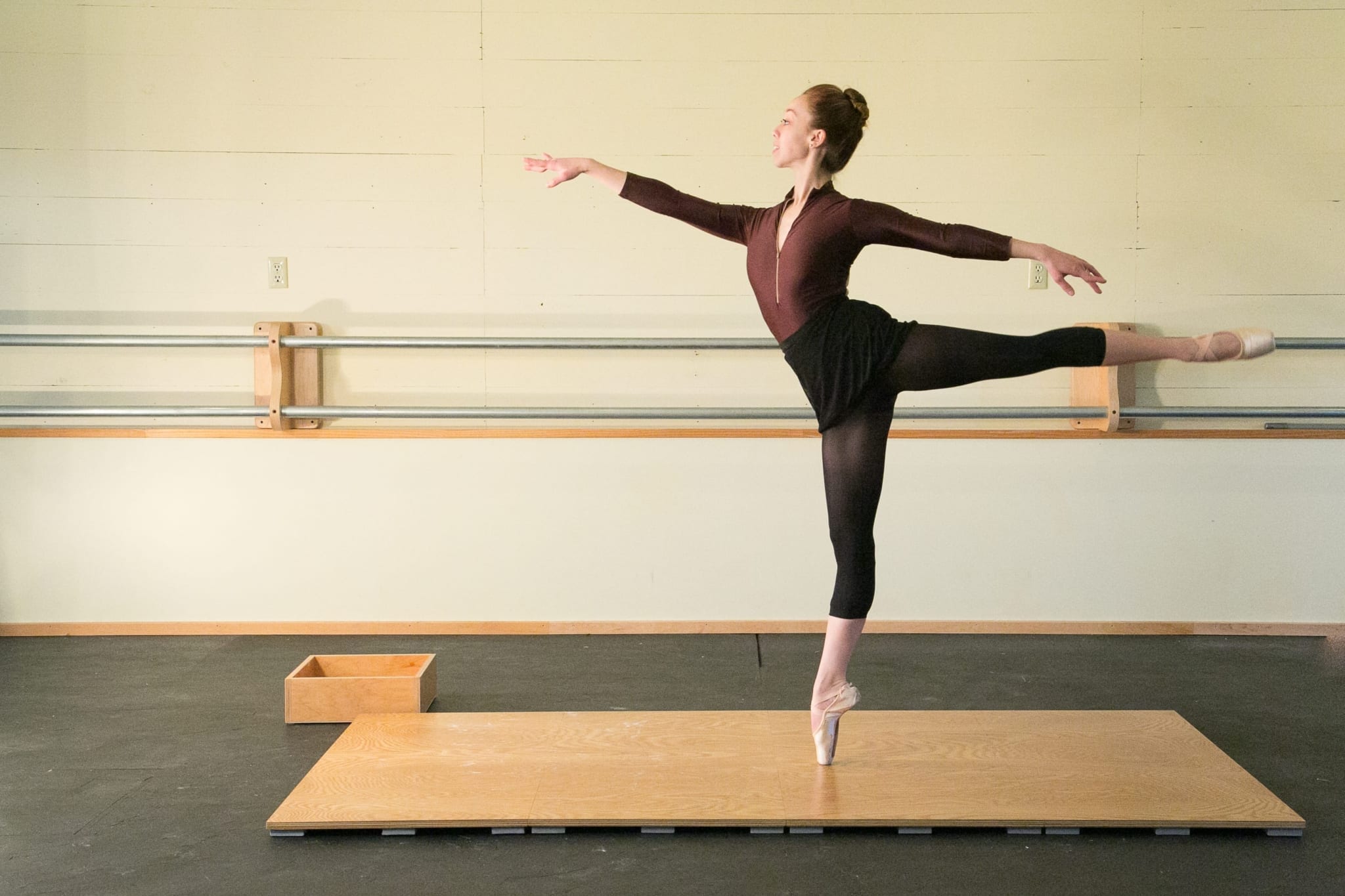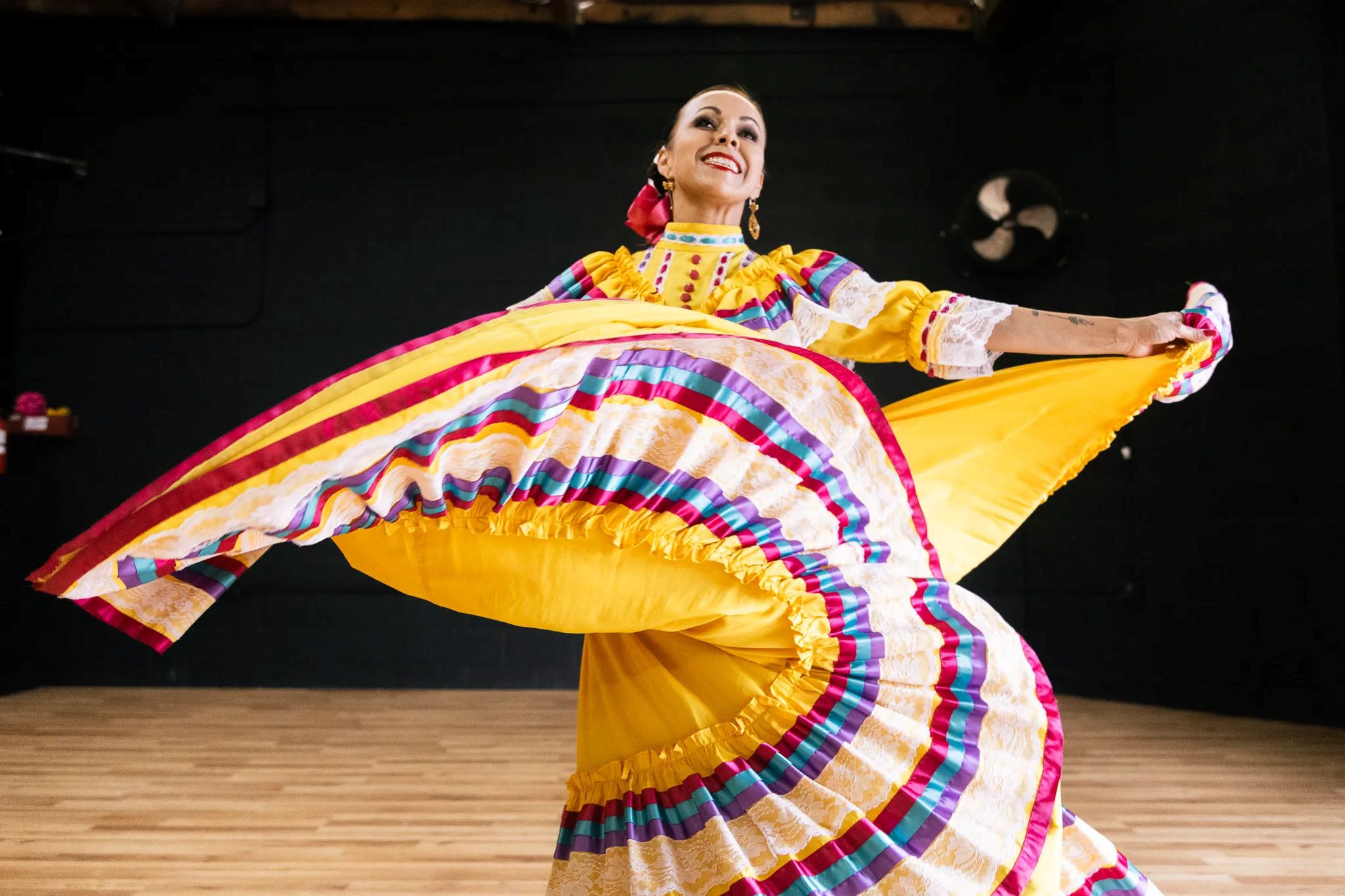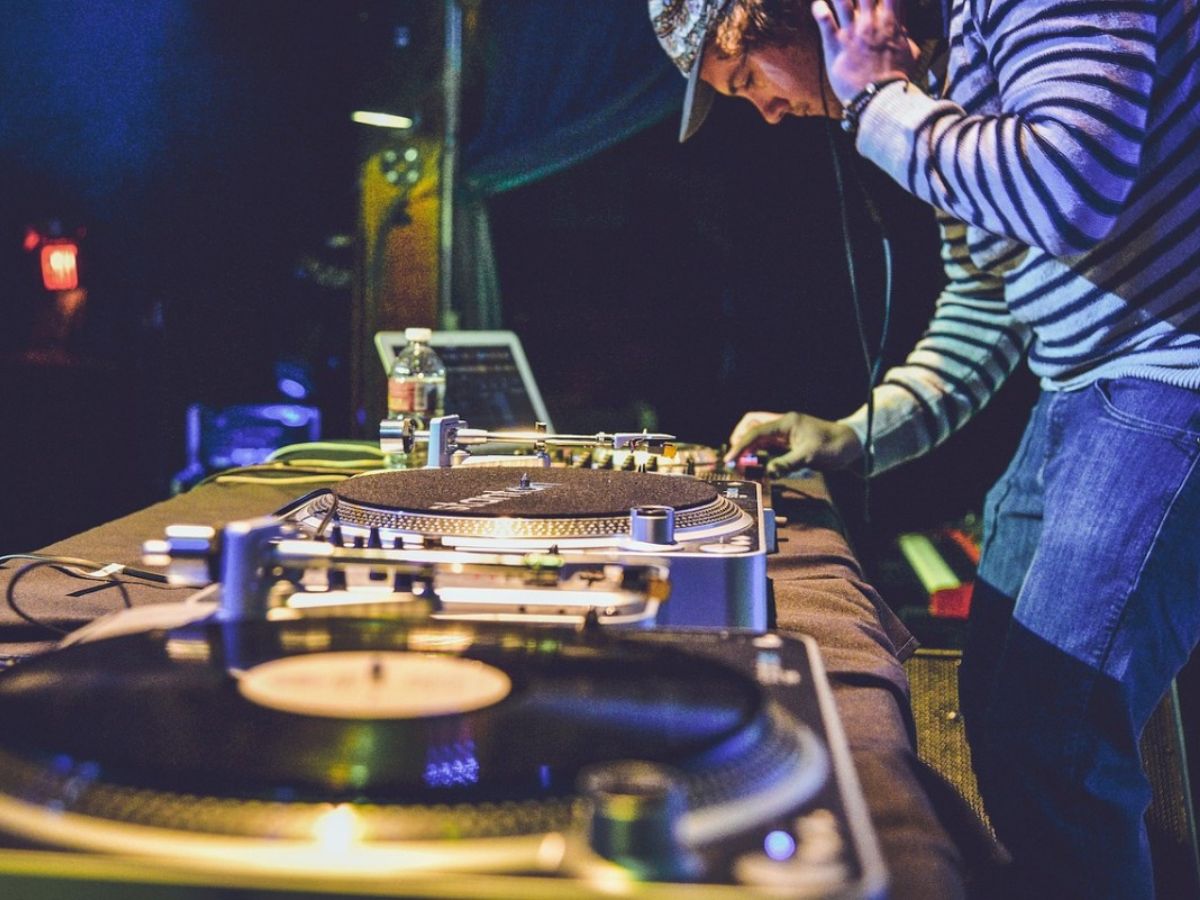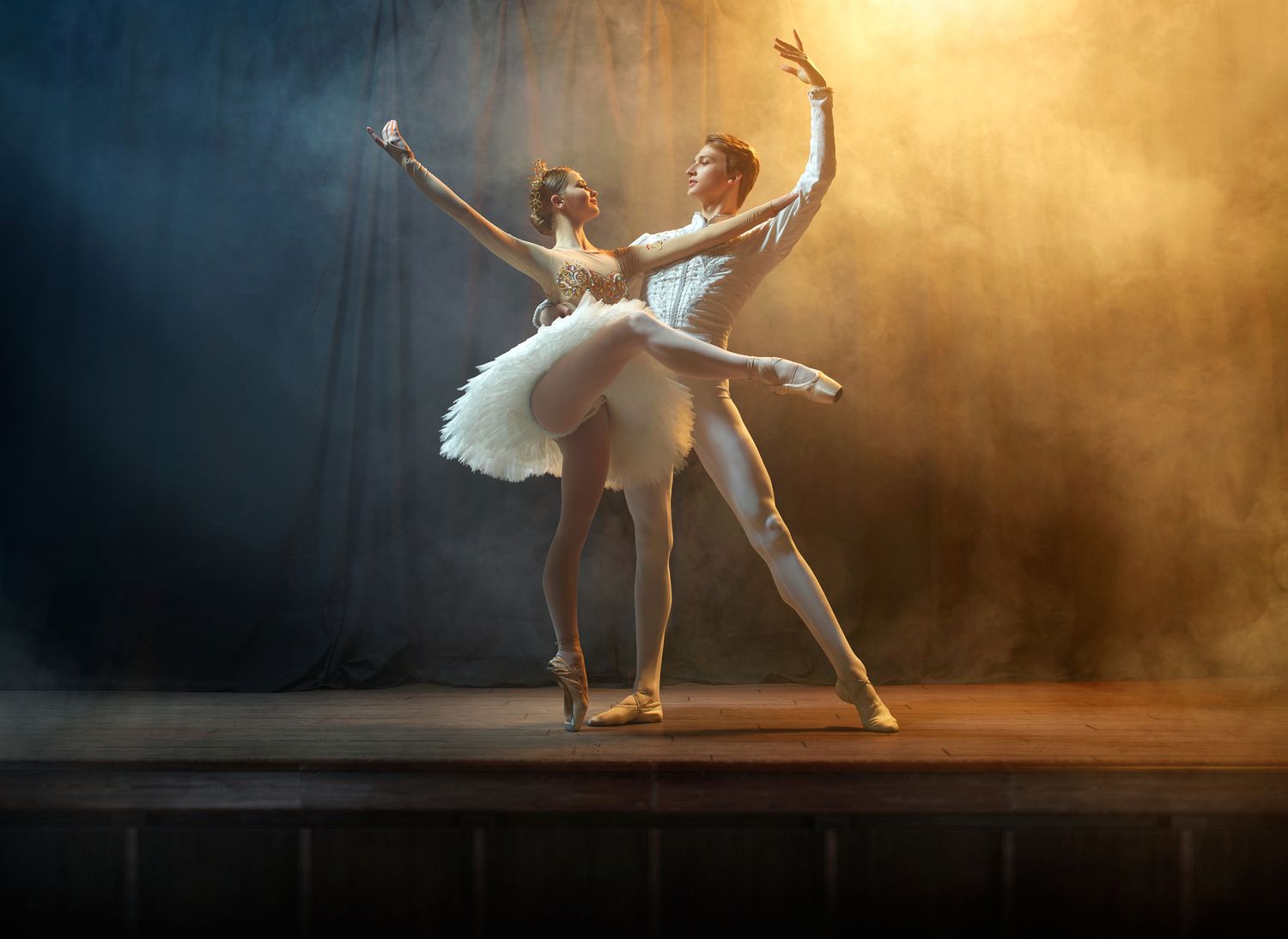

Jazz
What Is Jazz Funk Dance
Modified: January 22, 2024
Discover the electrifying fusion of jazz and funk in this captivating dance style. Learn what Jazz Funk Dance is and how it combines the smoothness of jazz with the energy of funk.
(Many of the links in this article redirect to a specific reviewed product. Your purchase of these products through affiliate links helps to generate commission for AudioLover.com, at no extra cost. Learn more)
Table of Contents
Introduction
Jazz Funk Dance is a dynamic and expressive dance style that fuses elements of jazz, funk, hip-hop, and street dance. It is known for its unique blend of technical precision and creative improvisation, making it a popular choice among dancers of all ages and backgrounds.
With its roots deeply embedded in African American culture, Jazz Funk Dance emerged during the late 20th century and gained significant popularity in the 1980s. This electrifying dance style combines the fluidity and soulfulness of jazz with the rhythmic grooves of funk, creating a powerful and captivating performance.
One of the main reasons for the appeal of Jazz Funk Dance is its versatility. It allows dancers to showcase their individuality and interpret the music in their own unique way. The freedom of movement and the incorporation of various dance styles make Jazz Funk Dance a thrilling art form to both watch and perform.
In this article, we will delve into the origins, characteristics, famous dancers, techniques, and the evolution of Jazz Funk Dance. We will also explore its presence in popular culture and provide information on how to get started in this electrifying dance style. So, put on your dancing shoes and get ready to discover the vibrant world of Jazz Funk Dance!
Origins of Jazz Funk Dance
Jazz Funk Dance has its roots in African American culture and draws influences from various dance styles. It originated during the late 20th century as a fusion of jazz dance and funk music, which was gaining popularity at the time.
Jazz dance, with its roots in African and European dance traditions, emerged in the early 20th century and was heavily influenced by the syncopated rhythms of jazz music. It incorporated elements of ballet, modern dance, and African dance, creating a unique style characterized by its expressive movements and improvisation.
On the other hand, funk music developed in the 1960s and 1970s, blending elements of soul, R&B, and jazz. Funk music was known for its energetic and rhythmic beats, which provided the perfect backdrop for dancers to express themselves with dynamic movements and intricate footwork.
As jazz and funk continued to evolve, choreographers and dancers began to explore the fusion of these two styles. They incorporated the soulful grooves and syncopated rhythms of funk music into their jazz dance routines, giving birth to Jazz Funk Dance.
Some of the early pioneers of Jazz Funk Dance include Frank Hatchett, who is often credited with developing the style and introducing it to the mainstream dance world. Hatchett drew inspiration from his African and Caribbean roots and seamlessly blended jazz, funk, and street dance elements into his choreography.
Another important figure in the development of Jazz Funk Dance is Bob Fosse, a renowned choreographer who incorporated elements of jazz and musical theater into his work. Fosse’s unique style, characterized by his signature isolations and sharp movements, had a profound influence on the development of Jazz Funk Dance.
Over time, Jazz Funk Dance continued to evolve and incorporate elements from other dance styles like hip hop and street dance. This fusion of styles further expanded the possibilities and creativity within the genre, allowing dancers to experiment with new movements and improvisation.
Today, Jazz Funk Dance is popularized through dance studios, workshops, and dance companies around the world. It has become a vibrant and dynamic dance style that continues to push boundaries, evolve, and captivate audiences with its unique blend of jazz, funk, and urban influences.
Characteristics of Jazz Funk Dance
Jazz Funk Dance is characterized by its vibrant energy, intricate footwork, and expressive movements. It combines the technical precision and discipline of jazz dance with the soulful grooves and rhythm of funk music. Here are some key characteristics that define Jazz Funk Dance:
- Rhythm and Musicality: Jazz Funk Dance relies heavily on the ability of dancers to connect with the music and interpret its rhythm. Dancers use syncopated beats, accents, and pauses to enhance the overall performance and create a dynamic connection between the movement and the music.
- Isolations: Isolations are a fundamental aspect of Jazz Funk Dance, where dancers learn to isolate and control specific body parts while maintaining fluidity in their overall movement. This technique allows for precise and sharp movements, enhancing the visual impact of the dance.
- Expressive Performance: Jazz Funk Dance encourages dancers to express their emotions and personality through their movements. It is a highly individualized dance style that allows for personal interpretation and improvisation. Dancers often incorporate storytelling and theatrical elements to elevate their performances.
- Groundwork and Floor Work: Jazz Funk Dance incorporates elements of street dance and hip hop, leading to a significant emphasis on groundwork and floor work. Dancers showcase their agility and strength through intricate patterns, spins, and slides on the floor.
- Dynamic Footwork: Jazz Funk Dance is known for its fast and intricate footwork patterns. Dancers learn various footwork techniques, including shuffles, turns, and jumps, to create visually captivating sequences. The footwork is often syncopated and rhythmic, adding depth and complexity to the dance.
- Style Fusion: Jazz Funk Dance brings together elements from diverse dance styles, including jazz, funk, hip hop, and street dance. This fusion allows dancers to explore various movement vocabularies, blending different techniques, and creating a unique style.
- Performance Energy: Jazz Funk Dance is known for its high energy and intense performance. Dancers strive to captivate the audience through their infectious enthusiasm, powerful movements, and stage presence. This characteristic creates a vibrant and engaging experience for both the dancers and the audience.
Overall, Jazz Funk Dance is a dynamic and expressive dance style that embraces individuality, musicality, and creativity. It combines technical precision with the freedom of improvisation, providing dancers with a platform to showcase their personality, passion, and unique style.
Famous Jazz Funk Dancers
Jazz Funk Dance has produced many talented and influential dancers who have made a significant impact on the dance world. Through their artistry, innovation, and dedication, these dancers have helped to popularize and elevate the Jazz Funk Dance style. Here are a few of the famous Jazz Funk dancers who have inspired generations:
- Frank Hatchett: Known as the father of Jazz Funk Dance, Frank Hatchett was a highly influential dancer and choreographer. He developed his unique style by fusing jazz, funk, and street dance techniques. Hatchett was a sought-after teacher and mentor, known for his dynamic energy and emphasis on musicality.
- Luigi: Luigi was a prominent jazz dancer who revolutionized the concept of body alignment and technique in Jazz Funk Dance. His innovative approach to dance, now known as the “Luigi Technique,” focused on creating an injury-preventive method that emphasized fluidity and control.
- Paula Abdul: Before becoming an internationally renowned singer and a choreographer, Paula Abdul made her mark as a Jazz Funk dancer. Her impressive dance skills and captivating performances led her to choreograph for artists like Janet Jackson and become a judge on “So You Think You Can Dance.”
- Derek Hough: Derek Hough gained fame through his appearances on the TV show “Dancing with the Stars.” His versatility in different dance styles, including Jazz Funk, has made him a fan favorite. Hough’s precision, showmanship, and ability to connect with the music have earned him multiple Emmy Awards for Outstanding Choreography.
- Janelle Ginestra: Janelle Ginestra is a highly influential Jazz Funk dance choreographer and instructor. Known for her dynamic and high-energy style, she has worked with top artists such as Beyoncé, Jennifer Lopez, and Britney Spears.
- Brian Friedman: Brian Friedman is a renowned choreographer who has made significant contributions to Jazz Funk Dance. He has choreographed for various artists, including Britney Spears, Rihanna, and Cher. Friedman is known for his creative and visually stunning routines.
- Tyce Diorio: Tyce Diorio is a versatile dancer and choreographer who incorporates Jazz Funk elements into his work. He gained popularity through his appearances on “So You Think You Can Dance” as both a contestant and a choreographer, showcasing his creativity and technical prowess.
These are just a few examples of the notable Jazz Funk dancers who have left an indelible impact on the dance world. Their contributions have helped to shape and redefine the boundaries of Jazz Funk Dance and have inspired countless dancers to explore and excel in this dynamic dance style.
Jazz Funk Dance Techniques
Jazz Funk Dance incorporates a wide range of techniques from various dance styles, creating a unique and versatile movement vocabulary. Dancers in this style must master a combination of dance techniques to execute the energetic and expressive movements characteristic of Jazz Funk. Here are some essential techniques commonly used in Jazz Funk Dance:
- Isolations: Isolations are a foundational technique in Jazz Funk Dance. Dancers learn to control and move specific body parts independently, creating sharp and precise movements. Isolations can involve the head, shoulders, ribcage, hips, and limbs, allowing for intricate and dynamic expressions.
- Syncopation: Jazz Funk Dance heavily relies on syncopated rhythms, which involve emphasizing off-beat or unexpected accents. Dancers must develop a keen sense of musicality and rhythm to execute precise and dynamic movements that complement the syncopated beats in the music.
- Strong Lines and Extensions: Jazz Funk Dance emphasizes long lines and extended limbs to create visually pleasing shapes. Dancers strive for clean lines and full extensions in their arms and legs, enhancing the fluidity and gracefulness of their movements.
- Footwork: Jazz Funk Dance incorporates intricate footwork patterns that vary in speed and complexity. Dancers learn various footwork techniques like shuffles, turns, jumps, and slides to create visually captivating sequences. Fast footwork adds energy and rhythm to the dance.
- Body Rolls and Undulations: Body rolls and undulations are common movements used in Jazz Funk Dance to add dimension and fluidity. Dancers learn to control the movement of their spine, creating smooth and expressive waves throughout their body, adding texture and visual interest to their performance.
- Groundwork and Floor Work: Jazz Funk Dance often incorporates elements of street dance and hip hop, which involve movements on the floor or “groundwork.” Dancers learn to execute controlled slides, spins, balances, and floor transitions, showcasing their agility and strength in low-level movements.
- Performance Energy and Stage Presence: Jazz Funk Dance is not just about executing technical movements; it also requires a strong stage presence and performance energy. Dancers must connect with the audience, exude confidence, and deliver their movements with charisma and passion.
Mastering these techniques requires practice, dedication, and a solid foundation in dance fundamentals. As dancers develop their skills and technique, they can incorporate their own style, interpretation, and creativity into their performances, adding a personal touch and making their dance truly unique.
Jazz Funk Dance in Popular Culture
Jazz Funk Dance has made a significant impact on popular culture and has found its way into various forms of media, including music videos, movies, television shows, and live performances. The unique blend of energy, creativity, and expressive movements in Jazz Funk Dance has captured the attention of audiences worldwide. Here are some examples of Jazz Funk Dance’s influence in popular culture:
Music Videos: Jazz Funk Dance has been prominently featured in numerous music videos. Artists like Beyoncé, Janet Jackson, and Britney Spears have incorporated Jazz Funk-inspired choreography in their music videos, showcasing the dynamic and visually captivating nature of the dance style.
Movies and Television Shows: Jazz Funk Dance has left its mark in the world of movies and television. Films like “Step Up” and “Honey” highlight the fusion of Jazz Funk with other urban dance styles, showcasing its energetic and jaw-dropping performances. Additionally, television shows like “So You Think You Can Dance” and “World of Dance” feature Jazz Funk routines, exposing viewers to its unique style and inspiring aspiring dancers.
Live Performances: Jazz Funk Dance has become a staple in live performances, both on stage and in concert. Many artists incorporate Jazz Funk-inspired choreography into their performances, adding an electrifying element to their shows. Dancers blend elements of jazz, funk, and hip hop to create visually stunning and high-energy routines that captivate audiences.
Dance Companies and Showcases: Jazz Funk Dance has paved the way for dedicated dance companies and showcases, providing platforms for dancers to showcase their skills and creativity. Companies like Syncopated Ladies and The PULSE On Tour feature Jazz Funk-inspired routines in their performances, bringing the energy and vibrancy of the dance style to the stage.
Social Media and Online Platforms: With the rise of social media and online platforms, Jazz Funk Dance has gained even more popularity and visibility. Dancers and choreographers share their Jazz Funk routines through platforms like YouTube and Instagram, attracting a wide audience and inspiring others to explore the style.
Jazz Funk Dance’s presence in popular culture has not only introduced the style to a wider audience but has also inspired and influenced aspiring dancers around the world. It continues to evolve and adapt to current trends, pushing the boundaries of creativity and innovation in the dance industry.
The Evolution of Jazz Funk Dance
Jazz Funk Dance has undergone an incredible evolution since its inception, constantly adapting and incorporating new influences to remain fresh and relevant. The dance style has evolved in response to changes in music, fashion, and popular culture. Here’s a brief overview of the different stages in the evolution of Jazz Funk Dance:
Origins: Jazz Funk Dance emerged as a fusion of jazz and funk in the late 20th century. Influenced by African American culture, it incorporated the syncopated rhythms of funk music and the expressive movements of jazz dance.
Expansion and Style Fusion: As the dance style gained popularity, dancers began to incorporate other dance styles, including street dance, hip hop, and contemporary dance. This fusion of styles expanded the movement vocabulary of Jazz Funk Dance and brought new levels of creativity to the genre.
Influential Choreographers: Choreographers like Frank Hatchett and Bob Fosse played a significant role in shaping Jazz Funk Dance. Their innovative choreography and unique styles influenced generations of dancers and pushed the boundaries of the dance form.
Commercialization and Popularity: Jazz Funk Dance gained significant commercial success and recognition through music videos, movies, and television shows. Artists like Michael Jackson and Janet Jackson embraced Jazz Funk-inspired choreography, bringing it to mainstream audiences and solidifying its place in popular culture.
Technique Development: Over time, Jazz Funk Dance developed its own set of techniques and training methods. Dancers focused on refining isolations, syncopated footwork, and dynamic performance techniques, further establishing the unique characteristics of the style.
Continued Innovation and Diversity: As Jazz Funk Dance continues to evolve, dancers push the boundaries of creativity, integrating elements of contemporary dance, acrobatics, and even ballet into their routines. This constant innovation keeps the dance style fresh and allows for endless possibilities of expression.
Global Influence: Jazz Funk Dance has spread worldwide, with dance communities and competitions dedicated to the style. It has become a global phenomenon, with dancers from various cultural backgrounds incorporating their own unique perspectives into the genre.
Through its evolution, Jazz Funk Dance has remained a vibrant and dynamic genre, showcasing the creativity, individuality, and passion of the dancers who embrace it. The style’s ability to adapt and grow ensures its longevity in the ever-changing landscape of dance.
Jazz Funk Dance Classes and Workshops
If you’re interested in learning Jazz Funk Dance, there are various options available to help you develop your skills and express your creativity. Classes and workshops provide a structured and supportive environment for dancers of all levels to explore and refine their Jazz Funk techniques. Here’s a look at what you can expect from Jazz Funk Dance classes and workshops:
Technical Training: Jazz Funk Dance classes typically begin with a warm-up to prepare the body for movement. Teachers focus on building a strong foundation by teaching fundamental techniques such as isolations, syncopated footwork, body rolls, and dynamic performance skills. Students will learn to execute movements with precision, fluidity, and style.
Choreography and Creative Expression: As Jazz Funk Dance is known for its emphasis on individuality and creativity, classes often involve learning choreography. Teachers guide students through routines that incorporate the unique characteristics of Jazz Funk, encouraging personal expression, and musical interpretation. Students have the opportunity to unleash their own style and add their flair to the choreography.
Improvisation and Freestyle: Jazz Funk Dance encourages dancers to improvise and freestyle, allowing them to explore movement outside of set choreography. Classes and workshops often include sections dedicated to freestyle dancing, giving students the space to experiment, build confidence, and develop their own unique movement vocabulary.
Performance Opportunities: Some Jazz Funk Dance classes and workshops may offer performance opportunities, allowing students to showcase their skills in front of an audience. These performances help build performance skills, stage presence, and confidence as dancers bring their choreography and freestyle abilities to life.
Networking and Community: Jazz Funk Dance classes and workshops provide an excellent opportunity to connect with fellow dancers who share the same passion. The dance community can provide support, inspiration, and potential collaborations. Networking within the Jazz Funk Dance community can open doors to new opportunities, such as auditions, competitions, and professional engagements.
Continued Learning and Growth: Jazz Funk Dance is a constantly evolving genre, and attending classes and workshops helps dancers stay up-to-date with the latest trends and techniques. Dancers can continue to expand their knowledge and skills by attending advanced classes and seeking opportunities to learn from experienced choreographers and professionals in the field.
Whether you are a beginner looking to explore Jazz Funk Dance for the first time or an experienced dancer wanting to refine your skills, Jazz Funk Dance classes and workshops offer a supportive and inspiring environment to enhance your technique, creativity, and performance abilities.
How to Get Started with Jazz Funk Dance
If you’re intrigued by the dynamic and expressive style of Jazz Funk Dance and want to get started, here are some steps to help you embark on your Jazz Funk dance journey:
1. Find a Jazz Funk Dance Class: Look for dance studios or schools that offer Jazz Funk Dance classes in your area. Research instructors and read reviews to find a class that suits your skill level and learning style. Many studios offer introductory classes specifically designed for beginners.
2. Attend Workshops and Intensives: Supplement your training by attending Jazz Funk Dance workshops and intensives. These short-term programs led by experienced choreographers and instructors can provide an immersive and intensive learning experience, allowing you to accelerate your progress in a short period of time.
3. Familiarize Yourself with Jazz Funk Dance Culture: Immerse yourself in the world of Jazz Funk Dance by watching performances, music videos, and movies that feature the style. Study the movements, observe the musicality, and learn about the pioneers and influential figures in the Jazz Funk Dance community.
4. Focus on Technique and Fundamentals: Jazz Funk Dance requires a solid foundation in dance technique. Focus on developing your isolations, syncopated footwork, and body control. Take the time to train your body to execute movements with precision, strength, and fluidity.
5. Practice Musicality and Performance Skills: Jazz Funk Dance is inherently musical and expressive. Work on developing your sense of musicality and rhythm. Listen to a variety of music styles and train yourself to interpret the beats, accents, and nuances of the music through your movement. Additionally, practice performance skills such as stage presence, confidence, and storytelling to enhance your overall performance quality.
6. Embrace Individuality and Freestyle: Jazz Funk Dance encourages individuality and personal expression. Experiment with your own movement style and explore freestyle dancing. Allow yourself the freedom to interpret the music and express your emotions through your movement. This will allow you to develop your unique artistic voice and add your personal touch to your dance.
7. Connect with the Jazz Funk Dance Community: Engage with other Jazz Funk dancers and enthusiasts through social media, forums, and local dance events. Participate in dance battles, workshops, and competitions to showcase your skills and learn from others. Networking within the Jazz Funk Dance community can provide valuable connections, inspiration, and opportunities for growth.
8. Seek Feedback and Guidance: Regularly seek feedback from instructors, choreographers, and fellow dancers. Constructive criticism can help identify areas for improvement and provide guidance on how to refine your technique and performance. Embrace a growth mindset and be open to learning and evolving as a dancer.
Remember, Jazz Funk Dance is all about embracing the joy of movement and self-expression. Enjoy the process, stay committed to your practice, and let your passion guide you as you embark on your Jazz Funk Dance journey.
Conclusion
Jazz Funk Dance offers a thrilling and expressive dance style that combines the technical precision of jazz with the infectious grooves of funk. Its evolution from its origins in African American culture to its presence in popular culture and beyond has made it a dynamic and influential genre in the dance world. With its emphasis on individuality, musicality, and creativity, Jazz Funk Dance provides a platform for dancers to showcase their unique style and interpretation.
From famous choreographers and dancers who have left their mark on the genre to the availability of classes, workshops, and performance opportunities, Jazz Funk Dance has become accessible to enthusiasts of all ages and backgrounds. Whether you are a beginner or an experienced dancer, Jazz Funk Dance offers a fulfilling avenue to explore movement, rhythm, and personal expression.
As you delve into Jazz Funk Dance, take the time to develop your technique, embrace your individuality, and cultivate your own artistic voice. Build a solid foundation in isolations, syncopation, and footwork, while also exploring freestyle and improvisation. Immerse yourself in Jazz Funk Dance culture, study the pioneers of the genre, and stay inspired by watching performances and staying connected with the vibrant Jazz Funk Dance community.
Jazz Funk Dance continues to evolve, incorporating new influences and pushing the boundaries of creativity. Its fusion of different dance styles and emphasis on performance energy and musicality make it a captivating dance form that continues to inspire and captivate audiences worldwide.
So, lace up your dancing shoes and let the rhythms of jazz and funk guide your movements. Let the spirit of Jazz Funk Dance ignite your passion, fuel your creativity, and take you on a mesmerizing journey that celebrates the joy of dance.











